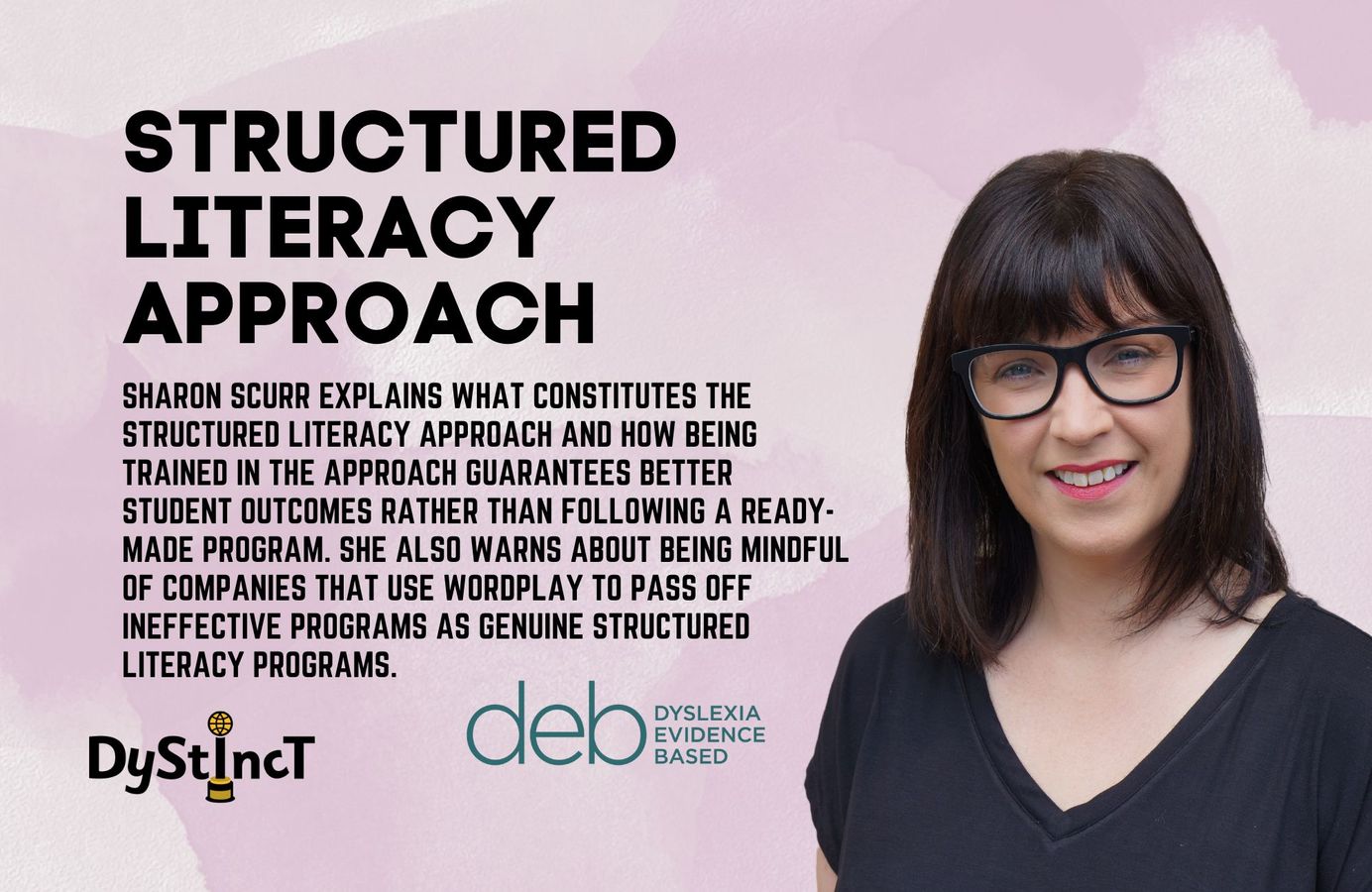
Issue 12: Structured Literacy Approach | Sharon Scurr
Sharon Scurr explains what constitutes the Structured Literacy approach and how being trained in the approach guarantees better student outcomes rather than following a ready-made program.
Sharon Scurr also warns about being mindful of companies that use wordplay to pass off ineffective programs as genuine Structured Literacy Programs.
Who first coined the term Structured Literacy Approach?
The Board of Directors at The International Dyslexia Association (IDA) made a landmark decision in 2014 to help promote their approach to reading instruction. The board named this approach "Structured Literacy" and stipulated that it would encompass all approaches to reading instruction that conform to IDA's Knowledge and Practice Standards. Today, this successful approach to reading instruction is widely known by many names depending on the location: Orton Gillingham, Multi-Sensory, Explicit Phonics, etc. In different states in the USA, the approach is often referred to by the name of the organisation training teachers. For example, it might be referred to as "Neuhaus" in Houston and "Wilson" in New York or Los Angeles after the names of the organisations training local teachers.
Structured Literacy in New Zealand
In New Zealand, the term Structured Literacy approach is used. We have some amazing New Zealand providers training teachers to implement the Structured Literacy approach in their schools around New Zealand. We also have the Institute of Multisensory Language Education from Australia that comes to New Zealand to train teachers in the approach.
Why name the approach?
The reason we use the term "Structured Literacy" to refer to this approach is that it provides a common practice, a worldwide GOLD standard that must be adhered to if you wish to create your own Structured Literacy approach to teach others or create a Structured Literacy program to sell. The term gives a clear path to follow, and it also gives us a gold standard to adhere to.
~ IDA
So, let's answer the biggest question.
What must be included in a Structured Literacy Approach or a Structured Literacy Program?
There are six elements and three principles of instruction on how to teach those six elements that MUST be included for anyone to claim their programs align with the Structured Literacy approach.
The six elements / components are:
Phonology
Phonology is the study of the sound structure of spoken words. Phonology is a key element of Structured Literacy instruction. Phonemic awareness, which is the ability to distinguish, segment, blend, and manipulate sounds relevant to reading and spelling, is central to phonology.
Syllables
Knowing the six syllable and vowel grapheme types helps readers to associate vowel spellings with vowel sounds. Syllable division rules help readers divide/decode unfamiliar words.
Syntax
The set of principles that dictate the sequence and function of words in a sentence—including grammar, sentence structure, and the mechanics of language.
Sound-symbol association
Once students develop phoneme awareness, they must learn the alphabetic principle—how to map phonemes to letters (graphemes) and vice versa, meaning we also teach Symbol-Sound. (The alphabetic principle is teaching the 44 sounds in reading (decoding) and spelling (encoding).
Morphology
A morpheme is the smallest unit of meaning in language. Studying base elements and affixes helps readers decode and unlock the meanings of complex words.
Semantics
Semantics is concerned with meaning (comprehension). The Structured Literacy curriculum (from the start) includes instruction in the comprehension and appreciation of written language.
This post is for paying subscribers only
SubscribeAlready have an account? Log in


